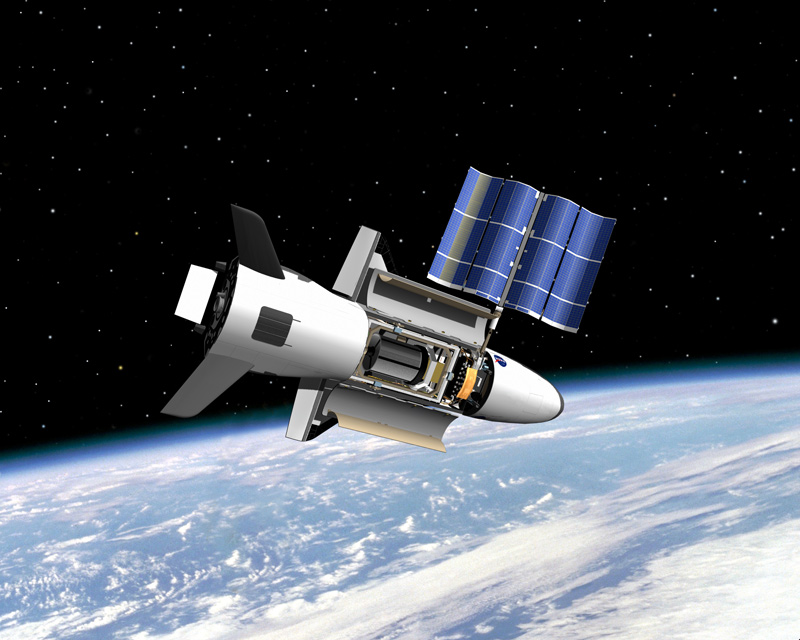
The U.S. Air Force's X-37B military space plane has now been circling Earth for 700 days, just a few weeks shy of the vehicle's spaceflight-duration record.
The robotic X-37B launched on its fifth and latest mission, known as Orbital Test Vehicle 5 (OTV-5), on Sept. 7, 2017. And the reusable spacecraft, which looks like a miniature version of NASA's space shuttle, has been zipping around our planet ever since.
Exactly what the X-37B is doing up there remains a topic of much speculation; the solar-powered spacecraft's missions, and most of its payloads, remain classified. The Air Force tends to talk about the X-37B program in general terms, stressing that the space plane tests technologies for future reusable spacecraft and takes experiments up to space and back.
Related: The X-37B Space Plane: 6 Surprising Facts
We do know a few details about OTV-5, however. For example, Air Force officials have revealed that its payloads include the Advanced Structurally Embedded Thermal Spreader experiment (ASETS-II), which is measuring how oscillating heat pipes and certain electronics perform in the space environment.
The Air Force has at least two X-37B vehicles, both of which were built by Boeing. Each space plane is 29 feet (8.8 meters) long and 9.6 feet (2.9 m) tall, with a wingspan of almost 15 feet (4.6 m) and a payload bay the size of a pickup-truck bed. Like the space shuttle, the X-37B launches vertically and lands on a runway like a plane.
The first X-37B mission, OTV-1, launched in April 2010 and ended that December after 224 days in space. OTV-2 lasted from March 2011 through June 2012, racking up 468 days of orbital flight. The 675-day OTV-3 mission launched in December 2012 and landed in October 2014, and OTV-4 wrapped up in May 2017 after 718 days aloft.
Get the Space.com Newsletter
Breaking space news, the latest updates on rocket launches, skywatching events and more!
As that litany indicates, each of the previous X-37B missions has lasted longer than its predecessors. So OTV-5 may well stay up for another 19 days, breaking the duration record set by OTV-4. We'll just have to wait and see.
- US Air Force's Secretive X-37B Space Plane (Infographic)
- In Photos: SpaceX Launches X-37B Space Plane, Lands Falcon 9 Rocket
- Gallery: Declassified US Spy Satellite Photos & Designs
Mike Wall's book about the search for alien life, "Out There" (Grand Central Publishing, 2018; illustrated by Karl Tate), is out now. Follow him on Twitter @michaeldwall. Follow us on Twitter @Spacedotcom or Facebook.
Join our Space Forums to keep talking space on the latest missions, night sky and more! And if you have a news tip, correction or comment, let us know at: community@space.com.

Michael Wall is a Senior Space Writer with Space.com and joined the team in 2010. He primarily covers exoplanets, spaceflight and military space, but has been known to dabble in the space art beat. His book about the search for alien life, "Out There," was published on Nov. 13, 2018. Before becoming a science writer, Michael worked as a herpetologist and wildlife biologist. He has a Ph.D. in evolutionary biology from the University of Sydney, Australia, a bachelor's degree from the University of Arizona, and a graduate certificate in science writing from the University of California, Santa Cruz. To find out what his latest project is, you can follow Michael on Twitter.









